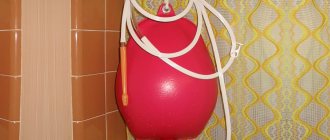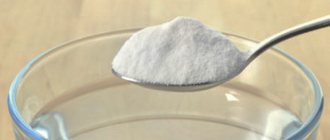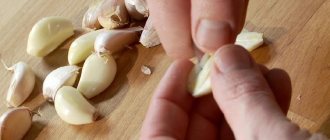What is douching?
Vaginal douching
involves irrigating it with various medicinal or herbal solutions and decoctions using a syringe or an Esmarch mug for therapeutic and prophylactic purposes. Douching can be carried out both in a hospital setting and independently, at home.
Proper douching at home.
It is important not to forget a few points:
- The temperature of the solution should be close to body temperature and feel comfortable.
- The course of douching in the treatment of a disease should usually not exceed 10 days, but most often, when prescribing, the doctor indicates a specific treatment regimen, which, of course, can be adjusted depending on the results during the treatment process.
- Careful cleaning of the personal syringe after use is necessary. Particular attention is paid to the tip, which should even be sterilized by short-term boiling before the next procedure.
- Care is required during the procedure - no sudden movements or efforts when administering the medicinal solution, as there is a danger of injury to the cervix or infection rising up from the vagina along with the flow of fluid.
- during menstrual bleeding;
- during pregnancy;
- during the period of acute inflammatory diseases of the pelvic organs;
- after abortion or childbirth;
- before visiting a gynecologist.
If douching is abused, there is a high probability of irritation of the vaginal mucosa and the development of various allergic reactions, as well as if the technology for preparing medicinal solutions for douching is violated. Any douching contributes to drying out the vaginal mucosa, which can cause even more discomfort than before.
Solutions
Consult your doctor about what you can douche from the list above in your specific case. The fact is that both herbal decoctions and pharmaceutical solutions have active ingredients, the spectrum of which must exactly match the existing disease.
For the procedure with herbal decoctions use:
- Chamomile;
- Calendula;
- Celandine;
- Oak bark;
- Nettle;
- Thyme;
- Burdock roots;
- Borovaya uterus;
- Alternately;
- Sage;
- Sagebrush;
- St. John's wort.
The combination of these herbs is often used for douching for thrush. In gynecology, soda-saline solutions are also known, which are also called hypertonic. The concentrations of salt and soda must be strictly prescribed by the doctor so as not to burn the mucous membranes of the vagina.
Pharmaceutical preparations that can be used for douching for thrush and other inflammatory diseases in gynecology:
These drugs have antiviral, antimicrobial and antifungal effects of varying degrees, and therefore are successfully used to treat a wide range of diseases with external pathogens.
How to choose a syringe?
Choosing a good douche means approaching douching treatment thoughtfully and with full responsibility. Not everyone knows that poor-quality syringing can affect the results of treatment, changing them for the worse. Of course, you need to know exactly what to choose from, since there are quite a lot of options for syringes, but at the same time remember that this item is one of those that you should not skimp on, considering the purposes for which it serves. You shouldn’t douche with something you found at home and, perhaps, used previously for other purposes. Douching definitely requires a separate personal syringe designed just for this purpose.
Brief characteristics of a high-quality syringe:
- should not emit almost any odors;
- has a homogeneous non-porous structure, smooth surface without any inclusions;
- there are no flaws in the structure of the tip that can damage the delicate mucous membrane of the vagina;
- has an even shape without asymmetrical sides;
- does not impart any color to the treatment solution.
The vast majority of syringes are made from a synthetic material such as polyvinyl chloride (PVC). If a manufacturer uses low-quality raw materials, the resulting product will also be of poor quality, with a pungent chemical odor or, conversely, have an unnaturally pleasant masking aroma. If the syringe has a porous, heterogeneous structure, there is a possibility that the smallest particles of the medicinal drug from the solution will be retained in the walls of the syringe, which will complicate its complete cleansing after use.
Types of syringes
Syringes come with a hard plastic tip (type B) or a soft PVC tip (type A). There are also special gynecological douches that have several side holes in the tip. The main part of the syringe can be made from polyvinyl chloride, rubber or plastisol materials.
Rules for disinfection and storage of syringes
Before each use, the douche must be disinfected, otherwise there is a risk of infection in the vagina. Disinfection is possible by boiling the tip in water for at least 10 minutes, as well as using a 3% hydrogen peroxide solution, in which it is necessary to soak the syringe for about 1-1.5 hours, then rinse with boiled water or saline solution.
Do not leave the remaining medicinal solution in the syringe for more than half an hour. After use, it is necessary to rinse the inner cavity of the syringe with hot water and then dry it. It should be stored at a temperature not lower than +5 and not higher than +25 degrees.
Do you need douching?
Of course, the answer to this question must be sought within the walls of the antenatal clinic, and not on the Internet, but it can definitely be said that to cleanse the vagina of natural secretions that accompany a woman on various days of the menstrual cycle, douching is absolutely unnecessary. These secretions are the process of self-cleaning of the vagina from various dead epithelial cells and microflora. So in this case you can only harm your health. are just a matter of taking a daily shower. Even if the discharge causes you discomfort in the form of itching, this is more likely a reason to visit a doctor than a reason to self-medicate with douching.
A gynecological douche is a special device used for irrigation (douching) of the vagina with healing solutions for preventive and therapeutic purposes. Most often used at home, in medical institutions they are used.
The device has been familiar to the fair sex since ancient times, or rather, since the 19th century.
Some gynecologists do not approve of douching, but it is quite popular. If you decide to carry out the procedure, then learn how to use a gynecological douche.
Douching
The vaginal microflora is a huge world, the protection of which falls on the shoulders of lactic acid bacteria. Due to hormonal imbalances, infections, dysbacteriosis, bacterial and fungal inflammations appear, and the mucous membrane is damaged.
Gynecological is an important part of the treatment prescribed by the gynecologist. Irrigation is performed with a syringe. The peculiarities of its structure make this process fast and relatively safe.
When is it prescribed?
The procedure may be prescribed if:
- Urethritis and cystitis.
- Cervical erosion.
- Colpitis, adnexitis.
- Inflammatory diseases of the vagina and cervix.
It is also prescribed for cystitis. Solutions with antibacterial and anti-inflammatory properties are used - hydrogen peroxide, iodine, soda, chamomile, boric acid, etc.
Keep in mind that there are also contraindications:
- Acute inflammation.
- Menstruation.
- Uterine bleeding.
- Pregnancy period.
- Postpartum period.
- Two weeks after uterine curettage.
- It is not recommended to do this for “cleanliness”. This disrupts the natural microflora and creates an environment for the proliferation of harmful bacteria.
For expectant mothers
If you are expecting a child, there is no simpler, safer and more effective way to deal with runny nose and similar manifestations! If you find it difficult to bend over a basin or bathtub, use a pipette.
The method is slightly different from the main one:
Use a pipette to rinse the nose of even very young children. Before starting such procedures, find out all the nuances from your pediatrician and get the go-ahead to carry them out. To remove fluid from your baby's nose, use a syringe.
Gynecological douche - a useful device
The material from which syringes were previously made in Russia was rubber. The development of the chemical industry has led to the replacement of polyvinyl chloride (PVC), which is increasingly used in the production of medical devices. Its advantages: no pronounced odor, plastic, does not absorb poured liquids or their smell.
Differences from usual
There are several shapes, types and sizes of gynecological douches. All consist of two parts: a pear (resembles a fruit, hence the name) and an elongated plastic tip. When choosing, make sure that the tip is smooth, without roughness. A series of holes are made on both sides.
The main differences between the gynecological one and the usual one: a soft and elastic polypropylene tip with a curved shape. This feature reduces the irritating effect on the vaginal walls.
Price
The price depends on the volume of the pear (50-500 ml) and the material used to make the device. A small, 220 ml Russian-made BI No. 8 with a hard tip will cost an average of 60 rubles. BI No. 9, 320 ml – 300 rub. With a soft tip and a volume of 310 ml you can buy an average of 360 rubles.
Indications for use
The procedure is indicated for the following diseases of the female reproductive system:
- Candidiasis - for thrush, douching is included in complex treatment with oral medications and vaginal suppositories. Among the herbal collections used are chamomile, calendula, and thyme. Among pharmaceutical drugs you can use Furacilin, Tantum, Miramistin for douching.
- Bacterial vaginosis is a disease that can be caused by too frequent and unnecessary douching. If prescribed by a doctor, you can use Miramistin, Vagotil, Chlorhexidine, Furacilin, Decasan for douching.
- For diseases such as fibroids, endometriosis, cervical erosion, douching will not bring any results, since the etiology of the diseases lies in hormonal imbalance.
By performing the procedure in a timely manner, correctly and only as directed by a doctor, you can alleviate the course of infectious and fungal diseases of the vagina associated with a qualitative violation of the microflora. Prescribing the procedure and solutions on your own can lead to serious complications for the reproductive system.
Douching is a medical procedure of a therapeutic and preventive nature, in which the vagina is washed with special solutions. Doctors' opinions regarding such actions are radically divided. Some consider this an integral part of therapy, without which recovery will not occur, others are convinced that the procedure harms the body.
Often, douching is not the only method of treatment, but it must be performed very responsibly, in compliance with all rules. Otherwise, the consequences can really be serious, including the development of inflammatory processes. Let us consider in detail how to carry out treatment at home, whether there are indications and contraindications, as well as other nuances.
There are several types of devices used to wash the vagina. A gynecological syringe looks like an ordinary pharmaceutical bulb. The main element is a rubber container, which is subsequently filled with a medicinal solution. The tool is also equipped with a special tip. When making a purchase, it is very important to pay special attention to the material from which the syringe is made.
The bulb for douching can be made of rubber, but it is better to give preference to polyurethane products that do not have pronounced odors (technical, rubber or medical). The product must be soft and elastic, and when filled with warm liquid, its walls must not be deformed.
There are also requirements for the tip. It should not have any characteristic odor, and it is made of plastic with a solid consistency. The shape of the tip is elongated and flattened, without sharp corners; the surface should be smooth and free of roughness. There are hardly any holes on both sides.
The gynecological douching bulb is assembled immediately before use. Until this point, all its parts should be kept separate from each other and stored in a clean box or plastic bag. It is advisable that the instrument is always clean and ready for use.
After the vaginal douche has been used in the procedure, it must be thoroughly washed in a solution of soap and warm water. This way you can get rid of any remaining medication. Next, the instrument is rinsed under running water, allowed to dry and stored. For disinfection, you can leave the tip in a solution of potassium permanganate for about an hour and a half.
How to use
Remember: only the doctor prescribes what to do and for how long. The information is for guidance only. If you do this procedure frequently, “for hygienic purposes,” then resistance to pathogenic microorganisms will decrease and the microflora will be disrupted.
Irrigation is done twice a day - morning and evening, duration - about 3 days. After which another 2-3 days are performed only in the evening. The course consists of a maximum of 10 days.
Irrigation should last no more than 15 minutes.
The solution should be at room temperature.
It is better to carry out the procedure in the bathroom. Pose: lying on your back, placing some container into which the liquid will drain. If there is a bend in the uterus, then the best position is on all fours.
- Disinfect
the gynecological douche. How to do this is written in the instructions for your device. Some of them can be boiled disassembled for about 15 minutes, others can only be dipped into a solution, for example 3% hydrogen peroxide. - Connect
the parts of the gynecological douche. - Prepare an
irrigation solution. If it contains aggressive chemicals (potassium permanganate and others), strictly follow the preparation rules. Otherwise, complications may develop, such as infectious colpitis or inflammation of the mucous membrane. Be sure to strain herbal infusions. - Pour the solution
into a bulb. - Lubricate
the tip with Vaseline to facilitate insertion. - Insert
it into your vagina. - Squeeze the bulb
, the liquid will begin to flow under pressure. The solution must be administered freely, without jerking, since the jet under pressure easily passes through the barrier of the cervix, which can lead to the occurrence of pathological processes. - Stay in a lying position for a few minutes.
Do not unclench your fingers unless you have removed the gynecological douche. When unclenched, pathogenic microbes and bacteria can enter it. If there is liquid left in the container after removal, it can be reused. To do this, first remove it, unclench your fingers, then press the bulb to let the air out, then place it in the vagina and press gently again.
Do not use for enemas, as this may cause bacteria from the intestines to enter the cavity of the reproductive organ.
Do not leave liquid in the bulb. Be sure to wash the bulb and tip with regular soap after the procedure.
Douching is an accessible treatment method that allows you to influence the vaginal mucosa, the vaginal segment of the cervix, and also allows you to reflexively affect the tissue of the uterus. This treatment method allows you to dissolve and wash away the pathological contents, disinfect vaginal tissues, and also act locally on the mucous membrane with drugs.
There are a huge number of gynecological diseases that the douching procedure can help you cope with. Their frequent diagnosis is associated with the complex anatomical features of the female reproductive system. In the vagina and cervix, there are a large number of depressions and pockets. When the environment is disturbed, tissues become inflamed and eroded. All this leads to the development of severe pathological processes.
- At .
- With endocervicitis.
- For thrush.
- Diagnosis: cervical erosion.
- For chronic inflammatory phenomena in the structures of the uterine appendages.
- For chronic adhesive pelvioperiotonitis.
- For bleeding from the uterus.
- For inflammatory phenomena in the tissues of the genital organs, which have an acute stage of progression.
- During menstruation.
- During pregnancy.
Not all female representatives have an idea of how to douche correctly. The gynecologist must explain and teach the procedure. But if even after this the patient still has questions, this article will give detailed answers to them.
Clinical studies conducted at gynecological centers show that a five-day course of douching is sufficient to get rid of the symptoms of candidiasis.
- In the first days, doctors recommend douching 2 times a day: in the morning, immediately after sleep and in the evening, before bed.
- The procedure is carried out 2 times a day for 3 days, after which they douche only in the evening.
- After 5 days, you cannot completely abandon the procedure, but it is carried out once a week to maintain the achieved result.
- At home, a regular bulb syringe is used to irrigate the vagina. In specialized centers, a special tool is shown for these purposes - Esmarch's mug. Before each manipulation, the tip is washed and boiled.
A syringe is a personal hygiene product, so another person cannot use it to protect themselves. In a situation where the specified instrument has begun to be used for the douching procedure, under no circumstances should it be used for other purposes, for example, for enemas or microenemas.
How to rinse your nose with salt at home: treatment of nasopharyngeal diseases
Free breathing through the nose is the key to the successful supply of oxygen to the human body. If your nose is stuffy and you have to breathe through your mouth, pathogenic microbes can get inside. Rinsing the nose is a simple procedure that will help relieve congestion in this important organ and cure serious diseases of the nasopharynx.
You need to repeat the whole process 2-3 more times;
Tip: Clean the syringe more often to prevent microorganisms from entering the nasal cavity again.
Options for douching in a clinical setting
There are clinical cases when a pregnant woman is still prescribed douching, then the procedure is carried out in a specialized center, under the supervision of specialists. In hospitals, the manipulation is performed on women with excess body weight, because on their own, at home, they simply cannot perform it efficiently and correctly.
- Increased risk of losing a baby in the first trimester.
- Possibilities of premature birth in the last trimester.
- Possibility of air entering the uterus and the development of an inflammatory process.
- Washing out beneficial microbial strains from the vagina and reducing the natural protective mechanisms of the mucous membrane.
- High probability of mechanical damage and infection of tissues.
To avoid douching during pregnancy, you must follow all the gynecologist’s recommendations for the prevention of gynecological pathologies, and the pregnancy must be planned.
Stages of douching step by step
Douching in gynecology is most often performed with a soda solution or an infusion (decoction) of medicinal herbs. Let's look at how to do douching correctly. Patients must adhere to the following rules:
- The solution is prepared a few minutes before manipulation. It should be warm, but not hot.
- Disinfect the tip of the instrument. To do this, wash it under running water and then boil for several minutes.
- Squeeze the instrument bulb as much as possible to release all the air.
- The syringe is filled with medicine.
- Direct implementation of the procedure.
A woman douches either over the toilet or in the bathroom.
- Before this, you need to take the correct position
: tilt your torso forward and bend your knees. - During these manipulations, the patient should be as relaxed as possible. Therefore, experts recommend other positions: sitting on the toilet with your legs spread, or lying in the bathtub with your pelvis slightly elevated.
- To insert the tip of the syringe, the woman carefully spreads her labia with her fingers, inserts the instrument and slowly releases the solution. After this, be sure to wear clean cotton underwear.
The douching procedure cannot be chosen for self-hygienic care. Before you decide to do this, you need to consult with a specialist, because the process can have negative consequences.
What time to do an enema
The best time for an enema is early in the morning. At this time, the intestines are most active.
The optimal time is around 7 am. It was chosen because the colon meridian is maximally active. He is tuned to energetic work, which is often accompanied by rumbling. At other times, the effectiveness of the procedure will be lower. But this does not mean that if it is necessary to cleanse the intestines, for example, in the evening, then it will be useless or painful.
What remedies to use and possible complications
Vaginal douching is most often prescribed for erosions, chronic inflammation in the tissues of the vagina and uterus, as well as for fungal invasion. As a result of the procedure, the contents are washed out of the vagina, significantly reducing the concentration of lactobacilli. A low concentration of lactobacilli leads to the active proliferation of other pathogenic microorganisms. This is why gynecologists do not recommend frequently resorting to douching, and some even prohibit this method.
If the patient is diagnosed with thrush, then it is recommended to use a warm infusion of chamomile or calendula or soda (1 glass of water + 1 teaspoon of baking soda) as a douching solution. Douching is not the primary treatment for fungal infections. The treatment regimen must include antifungal suppositories. For candidiasis, a solution of citric acid is also used. To prepare it, dissolve 1 tsp in 1 liter of warm water. citric acid. This solution is also effective for trichomoniasis. An acidic solution has one drawback - sperm activity slows down, which makes conception impossible. Some representatives of the fair sex use this method to prevent unwanted pregnancy. The acidic environment in the vagina is also maintained by douching with hydrogen peroxide.
With thrush, there is an acidic environment in the vaginal area. To shift it to the alkaline side, you can use ready-made solutions that can be purchased at any pharmacy chain: Chlorhexidine or Furacilin. These solutions have one positive quality. They are sold in special containers equipped with a spout. Therefore, there is no need to buy a syringe bulb as well.
What products are best not to use for douching?
- Potassium permanganate solution. This substance, especially at high concentrations, can cause burns to the delicate mucous membrane; the mucous membrane becomes dried out, which leads to slight tissue trauma. In addition, as a result of douching, the natural microbial environment is washed away.
- A solution of hydrogen peroxide and soda. If the solution is made incorrectly, a high concentration of the active agent can lead to mild inflammation, burns, and even the appearance of eroded areas.
For any gynecological diseases, you cannot self-medicate using the douching method, no matter how correctly you perform it. Only a doctor can prescribe this method of treatment and select a solution of the required concentration for this. Self-medication can end disastrously, causing serious consequences for the female body, the treatment of which will last a long time and is not always effective.
Many gynecologists are of the opinion that douching is necessary for the complex treatment of many female diseases, but there is a different opinion regarding this issue.
What is douching and how to do it correctly?
Douching is the process of irrigating the vagina with a special purpose solution for treatment or for preventive purposes. This rinsing method is performed using a syringe or an ordinary syringe without a needle. But you need to know how to carry out this action correctly, otherwise you can cause harm.
There are some diseases for which douching is strictly prohibited.
Washing the vagina should be performed twice a day - in the morning and evening, the course of treatment is approximately three days. The maximum treatment time is ten days. Rinsing usually lasts no more than fifteen minutes, and the liquid should be lukewarm.
The irrigation process is best done in the bathroom, in a lying position. You need to place a basin into which the solution will flow. When the uterus is bent, the best position is to kneel.
First you need to disinfect the syringe or syringe, from which the needle must first be removed. To perform disinfection, you need to dip the syringe in hydrogen peroxide or simply irrigate it with boiling water.
A pre-prepared solution (the approximate amount of solution for one irrigation is about two hundred milliliters) must be drawn into a syringe and lubricated its tip with Vaseline to ensure easy and painless administration. Place the tip of the bulb into the vagina a couple of centimeters and press it little by little so that the liquid begins to inject and slightly contract the vaginal muscles. This must be done with caution so as not to injure the vagina.
After all this, you should lie down for a while. Do not immediately unclench the pear if it is not removed. If you make this mistake, bacteria will get into it. After use, the syringe should be washed thoroughly for further use. Under no circumstances should an enema bulb be used for douching.
Terms of use
It is not enough just to know what a gynecological douche is. How to use this tool should be learned before starting the procedure. Vaginal douching can be done not only with a pharmaceutical bulb, but also with an Esmarch mug, and some use a syringe without a needle, with a volume of 20 cubes, for douching.
Let's take a closer look at how to douche correctly at home. It is necessary to use only warm water to prepare the solution. This is a very important point that cannot be deviated from. The temperature of the liquid should be within 37 degrees.
The duration of the course of therapy should be within 3-5 days, in extreme cases, no more than a week. Otherwise, there is a possibility of washing out not only pathogenic, but also your own microflora from the vagina.
Proper douching lasts about 10-15 minutes. In most cases, when a doctor prescribes a procedure, he prescribes a clear course of action for the patient, from which she should not deviate. The most common treatment is when a woman does the procedure in the morning and evening, and after improvement it is performed once a day.
When considering the question of what douching is and how to do the procedure correctly, it must be said that liquid should not be supplied to the organ under strong pressure. With this approach, the fluid has more opportunities to leave the organ, as a result of which inflammatory processes can develop outside the cervix.
In gynecology, douching is performed using an Esmarch mug, which is a balloon with a plastic tube and tip. A characteristic feature of this device is the ability to control the pressure when supplying liquid.
If gynecological douching is performed with a certain instrument, it should never be used, for example, to perform an enema or microenema, even if the product has been well disinfected.
How to douche correctly - the procedure must be performed slowly and carefully, without sudden movements. During the insertion of the tip, it is strictly forbidden to apply force. A woman should not feel discomfort or pain when washing. If you act abruptly, there is a possibility of damaging the vaginal walls or bladder.
How to properly douche at home with a pear - you should lie in the bathtub, while placing your feet on its sides. If a woman finds it more comfortable, she can use a toilet seat, and then the procedure will be performed in a sitting position. In this case, the liquid will flow under its own weight and will not penetrate beyond the vagina.
Why is douching necessary?
Vaginal douching is indicated in the complex treatment of certain gynecological diseases (primarily inflammatory processes in the vagina). A huge number of decoctions and folk remedies provide excellent results.
This procedure is prescribed by a gynecologist for the following diseases:
- thrush;
- nonspecific cervicitis and colpitis;
- endometritis;
- salpingo-oophoritis.
A certain number of women try to protect themselves from unwanted pregnancy by douching, but this will not bring results. Such actions will not protect against pregnancy, even if done immediately after the end of sexual intercourse. It is also invalid for protection against STIs.
Douching is a hygienic procedure, but it should not be done unnecessarily so as not to disturb the microflora. If there is no indication for this process, there is no need to do it.
Contraindications
A procedure that seems fairly harmless at first glance is not always permitted. In particular, douching is prohibited:
- For the purpose of hygienic cleansing of the vagina;
- Without prior consultation with a gynecologist, even in the presence of discomfort;
- On the eve of a visit to the gynecologist, since a smear test and visual examination may provide distorted information;
- For inflammatory processes of the reproductive system: adnexitis, inflammation of the appendages, endometritis;
- During pregnancy, menstruation, the first two months after childbirth and after an abortion.
Violation of these contraindications can lead to serious consequences, the spread of the inflammatory process and bleeding.
How can you irrigate your vagina?
At home, you can use decoctions of medicinal herbs (chamomile, St. John's wort, thyme, etc.). To remove fungal infections and renew the normal vaginal environment, vinegar or lemon solutions are used. To do this, add one teaspoon of vinegar (or lemon juice) to 250 milliliters of water.
Drug treatment is done with the following drugs:
- Furacilin;
- Chlorhexidine;
- Epigen.
If they have antibacterial properties, pharmaceutical products kill germs and eliminate inflammation. They inhibit the proliferation of pathogenic microorganisms in the vagina and relieve unpleasant symptoms. Irrigation with antiseptic solutions is important in the initial stages of the disease in the case of an additional remedy to the main treatment.
Other medicinal plants for women's health
When discussing the benefits of medicinal plants, we must not forget about the healing properties of celandine. This plant is rich in vitamins and copes well with harmful bacteria, relieves inflammation during cervical erosion. Of course, juice cannot be used to prepare a medicinal product; doctors advise using exclusively dried herbs.
So, 3 tablespoons of raw materials should be boiled in water (1 liter), then the broth is infused for at least 1 hour. The resulting liquid must be filtered and diluted with boiled water. You should douche with celandine for 20 days; it is recommended to do this before bed.
The following herbs for douching also have a healing effect:
- St. John's wort;
- sagebrush;
- oregano
St. John's wort is a natural disinfectant and anti-inflammatory agent. It is used in the complex treatment of inflammatory processes in the vagina, as well as erosions and menstrual irregularities. A less saturated decoction from the plant is suitable for this purpose - take 3 tablespoons of dry raw material for 2 liters of boiling water and cook the mixture for 20 minutes over low heat. The cooled liquid is used for douching as prescribed by a doctor.
Wormwood, unlike other herbs, can be used not only to combat candidiasis, but also to relieve symptoms of gonorrhea, trichomoniasis, and viral infections. To prepare the solution, take 1 teaspoon of dry raw materials and pour 200 ml of boiling water over it, then infuse the liquid for 1 hour.
The product can be used daily for 7 days, however, consultation with a specialist is important before and after treatment.
Herbal infusion of oregano helps to regulate the menstrual cycle and restore normal microflora in the vagina after drug treatment. So, 10 g of dry raw material is poured with boiling water (1 liter) and the mixture is left to infuse until it cools completely. The resulting liquid is used for vaginal irrigation before bedtime for 10 days.
Is it possible to douche without a reason?
The answer is definitely no. The vagina itself produces a secretion that independently cleans and removes dead cells. If there is no infection, then there is no need for douching. Daily washing is enough.
You should know that constant douching disrupts the balance of the mucous membrane, which leads to dryness, suppression of natural microflora and impaired vaginal acidity. As a result, this leads to a significant decrease in the concentration of lactobacilli and the development of dysbacteriosis.
Irrigation for treatment purposes
If leucorrhoea is caused by a disease, it has a foul odor, an unusual color and composition, and creates itching, discomfort and irritation, then you should immediately visit a gynecologist. He will send you for tests, the results of which will reveal the problem, and it will become clear how and with what to eliminate it. In this situation, irrigation is carried out with medications that will relieve discomfort.
For example, if you have an STI, antiseptic solutions are prescribed. Only their use is relevant for emergency prevention (for example, after an intimate relationship with a casual partner) and it is not possible to completely prevent the onset of the disease simply with the participation of these solutions.
Infusions and decoctions of medicinal herbs are also known - chamomile, wormwood, calendula and others; they eliminate inflammation and speed up recovery.
Although douching used to be practiced quite often, recently it has lost its former popularity. According to studies, douching can cause bacterial infections and complications during pregnancy. That is why this procedure is far from an ideal method of hygiene. If, however, your doctor has recommended that you douche, follow the steps below to do it correctly and safely.
Steps
Part 1
When should you douche?
- Understand that the body independently cleanses itself of vaginal secretions, blood and semen.
Many women douche regularly: after menstruation, to wash away vaginal discharge or semen after intercourse. The body has excellent self-regulation properties. The inside of the vagina cleans itself without douching, so there is no need for soap and rinses to keep it in a healthy, normal condition.
Do douching as advised by your doctor.
In recent years, a number of studies have been conducted, as a result of which scientists have concluded that douching may cause more harm than good to your body. Self-cleaning is natural for the vagina, but douching can disrupt the acid-base balance of the vagina. As a result, the likelihood of yeast and other bacterial infections increases. Therefore, before douching, be sure to consult your doctor.
It is unacceptable to douche to eliminate itching and burning.
Some women find it necessary to douche in order to get rid of itching and burning inside or outside the vagina. These manifestations may be symptoms of some kind of disease, and by douching you will simply extinguish them. Instead of suppressing these symptoms, consult a doctor about your problem.
Do not douche to remove strong vaginal odor.
It is quite normal for the vagina to have a slight, constant odor. If you experience a strong vaginal odor (outside your menstrual cycle), this could be a symptom of an infection. Instead of trying to wash away this odor, you should seek the advice of a doctor. Douching should be done only after this, otherwise you may harm your body.
Avoid douching to prevent sexually transmitted diseases or unwanted pregnancy.
Douching is not an alternative to using a condom or other means of contraception, but is used only for internal vaginal hygiene. Therefore, douching will not protect you from sexually transmitted diseases or unwanted pregnancy.
Maintain external vaginal hygiene instead of douching.
If you want to keep your vagina clean and odor-free, then you should wash the outside of it. To maintain hygiene, you only need to wash away dirt and sweat from the outer part of the vagina. To do this, you can use liquid soap while taking a shower or bath. Your body will take care of the cleanliness of the vagina from the inside on its own.
Part 2
How to do douching correctly
- Select the ingredients to prepare the douching solution.
Check to see what douching ingredients are available at your local pharmacy. Avoid ingredients that contain fragrances or dyes, as they may cause infection. In addition, you can prepare a solution for douching yourself at home. To do this, you only need vinegar and a syringe, which you can purchase in the store.
Prepare a solution for douching.
If you purchased a ready-made kit in a store, then to prepare the solution you need to follow the instructions that came with it. As a rule, to prepare a solution for douching, you need about one liter of water. If you decide to prepare the solution yourself, then you need to mix vinegar with water in a ratio of 1:3. In this case, the volume of the resulting solution must be at least 0.5 liters.
Fill the solution into a syringe or other suitable container.
Follow the instructions on the package or simply fill the container with the solution. If the entire solution does not fit into the container, then fill it as much as possible, and add the rest later.
Carry out the procedure in the shower or bath.
Douching is not the most accurate procedure, but under certain circumstances it is still necessary. To prevent the solution from splashing, the entire procedure should be carried out in the shower or bathtub. Moreover, after completing the procedure, you will most likely need to take a shower or bath.
Rinse your vagina with a syringe.
Insert the tip of a douche or other suitable container into the vagina and press it to release the liquid. Continue the procedure until you have used all the prepared solution.
- There is no need to keep the solution inside. One liter of solution is enough to thoroughly rinse the vagina.
- When using a douche, do not insert the plastic tip too deeply into the vagina. In addition, there should be no pain during the procedure. The sensations should converge only to the heat emanating from the warm water flowing down.
- Use only fresh solution. Always throw away any leftovers - they cannot be reused.
Is a preventive procedure beneficial?
Some women, having discovered unpleasant odors, do not seek to look for the cause in violations of personal hygiene rules, but wash the vagina in order to disinfect it.
This approach is not correct. The entire human body, including the vagina, has the property of self-cleaning. Vaginal discharge cleanses its walls, uterus, and canals, maintaining the natural microflora.
Performing the procedure without a prescription, but only for prevention, threatens to disrupt the microflora. If you feel itching, burning, and the discharge has acquired an abnormal smell and consistency, you need to consult a doctor who will prescribe what you can use to wash the vagina and how to do it correctly.










